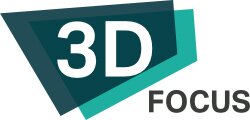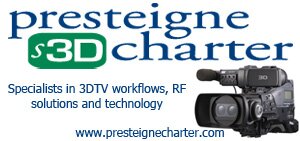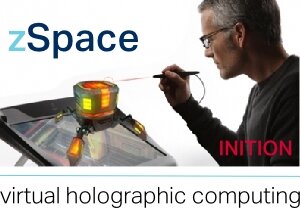ColorCode 3D defend system as 3D for the ‘Here and Now’
During an interview with 3D Focus TV, ColorCode 3D Sales Manager Andreas Krona has said the colour based 3D company has a bright future even with the expected 3D TV sales growth.
“From our perspective ColorCode 3D is the 3D here and now. Maybe in five years’ time enough people will have 3D televisions, at least in our part of the world, where as in other parts of the world it will take longer.” said Andreas.
The company, which has developed a 3D solution which they claim to be the world’s most powerful and universal stereo-3D system, has been approaching production companies, games publishers and content aggregators to encourage them to release their programmes, game and movies in ColorCode 3D whilst 3DTV sales remain low.
“There is a big problem in the 3D world” continued Andreas. “Content producers are producing 3D content, but buyers don’t really want to buy it because there is not enough 3D TVs out there and no real way of making money from it but our technology opens up the possibility to distribute 3D to everyone and everywhere.”
When asked how the colour based 3D system could cope with competition from passive 3D glasses systems Andreas replied, “The tech people would probably look at this and say they want to wait for a perfect polarised 3D system while the business people would see the possibility of opening up 3D to everyone.”
Billed as 3D for anytime, anywhere ColorCode 3D is a patented colour based glasses 3D system that offers the advantage of a reasonably clear 2D image when not being viewed via the 3D glasses unlike the traditional red/cyan anaglyph system.
The company claims it to be the only system that can offer full colour 3D to any display type such as television, mobile and print, which it achieves by delivering full colour to the left eye.

ColorCode 3D’s biggest job so far was working with PepsiCo, Intel, NBC and Dreamworks to encode adverts for the most expensive advertising slot in the world – the SuperBowl, in February 2009, when they were booked to supply 130 million ColorCode 3D glasses.
This was followed by a special 3D episode of Warner Bros. TV’s sci-fi comedy series Chuck, which was later broadcast on Virgin Media in the UK and in the same year, Channel Four encoded a series of special programmes into Color Code 3D for its week long 3D season (much to the dismay of some in the industry who worried it might give the public the wrong impression of what 3D looks like in the new millennium).
Other achievements have been special 3D features in Time Warner magazines Entertainment Weekly, Fortune, People, Sports Illustrated and Time Magazine.
The company has also worked on two large outdoor screen projects – an 8 X 25 metre indoor video wall installation for a “Comcast Holiday Spectacular” campaign and a 3D presentation on the world’s largest outdoor LED video wall (22 X 29 metres) in Dallas.
The Science Behind ColorCode 3D
 ColorCode 3D is a patented broadband colour-separation based system. For content to be encoded into ColorCode 3D, the company request a left and right stereo pair for an image, animation or video. A ColourCode 3D encoded image is a single full colour image with the stereoscopic information encoded as minute colour variations in the colours. Without glasses, a ColorCode image almost looks like a regular image but with higher contrast and amber/blue hazy edges.
ColorCode 3D is a patented broadband colour-separation based system. For content to be encoded into ColorCode 3D, the company request a left and right stereo pair for an image, animation or video. A ColourCode 3D encoded image is a single full colour image with the stereoscopic information encoded as minute colour variations in the colours. Without glasses, a ColorCode image almost looks like a regular image but with higher contrast and amber/blue hazy edges.
The ColourCode 3D glasses have amber and blue filters with complex spectral curves to separate the left and the right image contained in the encoded image. Unlike the red/cyan anaglyph system, which simply delivers parallax information to both eyes, in the ColorCode 3D system, the parallax information is conveyed through the blue filter and the colour information is sent through the amber filter. When wearing the glasses, the contrast is returned to normal and the blue/amber hues vanish.
The company is also promoting its live ColorCode 3D conversion system called ColorCode 3D On Air which can be used for live TV and Internet 3D broadcasts for people without 3D sets. The company’s revenue is generated form the sales of two types of glasses – one premium and one paper disposable plus encoding fees of 300 Euros per minute which includes all licenses (from DVD to television broadcast).
ColorCode faces competition from another color based system called Trioviz Inficolor.
For more information about ColorCode visit their website.
FREE WEEKLY 3D NEWS BULLETIN –



















